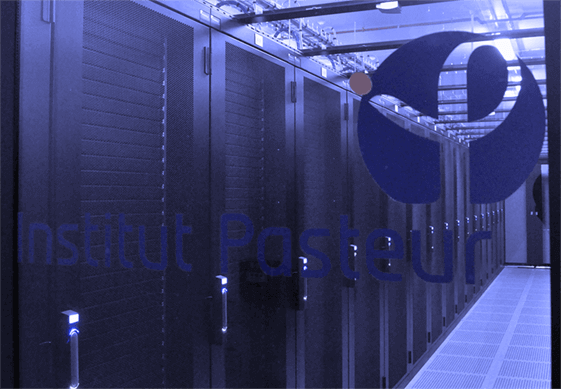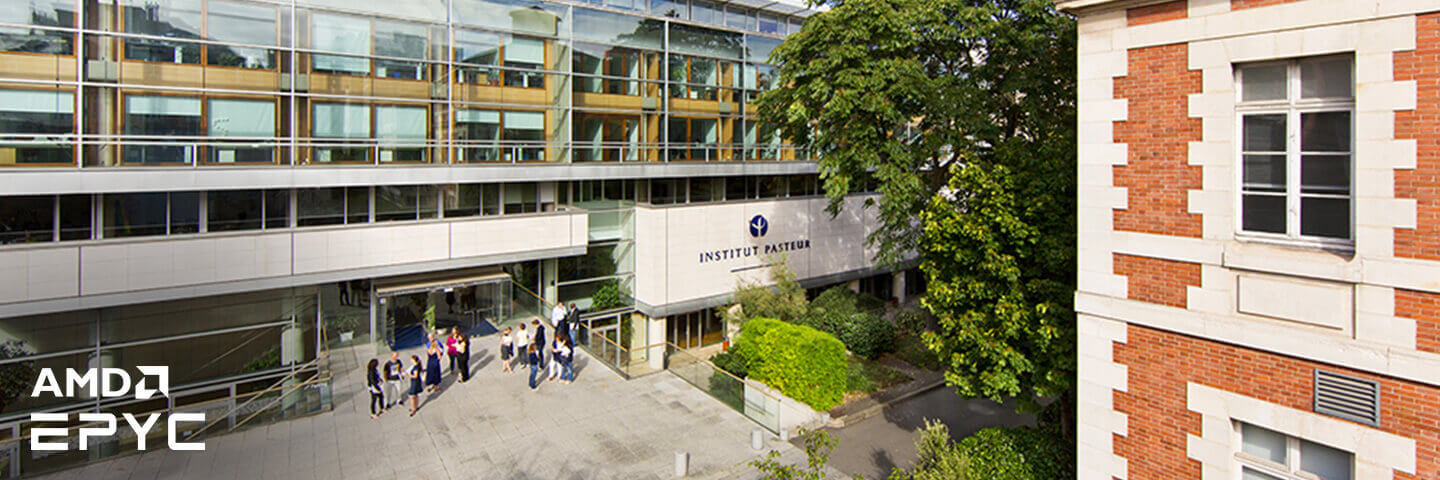To this end, it focuses on four central areas:
- Research
- Leveraging research results
- The education of scientists and professionals
- Public health and health monitoring (supporting health authorities and patients).
The Institut Pasteur is a private, non-profit foundation with nearly a third of its budget coming from generous public donations.
The IIS comes under the remit of the institute’s IT department, who is responsible for managing scientific computing resources. The IIS teams monitor the HPC infrastructure’s installation, integration and maintenance of its operational requirements.
PROJECT OBJECTIVES.
The Institut Pasteur’s (IP) primary objective was to expand the existing computing resources, which already amounted to over 380 computing servers bundled into one HPC cluster.
The new servers were to boost the cluster’s processing capacity by delivering more computing power.
The other aim was to harmonise maintenance of the HPC cluster and only have one single point of contact and a uniform level of maintenance.
Challenges:
- Bolstering and consolidating the IP’s central computer resources
- Identifying a partner to support the IP to set up their new servers
- Identifying a partner to take on the commissioning of the entire computing infrastructure on-site.
During the selection phase, Bechtle was able to prove their expertise in the areas required for us to achieve the two main objectives of our project. Bechtle has come to be so much more than just the supplier we were looking for. They are our partner for HPC projects.
Youssef Ghorbal, Platform Administrator, Institut Pasteur
SOLUTION.
Working together with the IIS teams, a number of high-density servers based on twin² chassis—4 servers in a 2 U chassis—were implemented in the computing cluster.

To meet the different needs of the users, several individual configurations defined by IIS were integrated into the existing infrastructure:
- Standard v4 computer nodes (with an INTEL V4 processor)
- Standard v5 computer nodes (with an INTEL V5 processor or scalable processor)
- BigMEM v4 computer nodes (with an INTEL V4 processor and extended memory 512 GB per server)

Plus two new technical areas for increasing resources for the different profiles and use types:
- Standard AMD computer nodes (to be able to use the AMD EPYC processor)
- BigMEM AMD computer nodes (2 x EPYC 7552 processors with 48 cores and 2 TB, which equates to 96 cores and 2,000 GB per node)
- GPU computer nodes with 4 x Nvidia A100 (based on a AMD EPYC processor).
A comprehensive hardware warranty including on-site maintenance over the course of the contract was also concluded.
BUSINESS BENEFITS.
The ever-increasing number of uses has made additional computing resources necessary. With these being added, the investment in the HPC cluster served to strengthen the existing infrastructure. The newly created package is now covered by a professional warranty that means better availability and a service level that fulfils the IIS team’s expectations.


